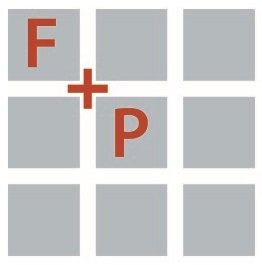A Sustainable Housing Model for Adults with Developmental Disabilities
/By Michael A. Wang
When communities proactively engage in promoting diversity, housing opportunities are often at the center of the debate. While affordable housing is typically the focus, providing housing for adults with developmental disabilities is another important piece of this equation, and it deserves more attention. Where does one look for examples of sustainable models? A noteworthy precedent originated in 1983 when Specialized Housing Inc. [SHI] developed a model for supporting adults with disabilities to live independently, while also having a stake in home ownership.
Congregate living environments take many forms but SHI’s model is based on building a sense of community that relies on foundational relationships between residents, staff and family groups. Integration with the surrounding community – whether through jobs, volunteer work or community-based programs – is a key component of daily life for residents, allowing them to develop independence and critical skills, such as self-advocacy.
SHI homes in Brookline and Newton, established over the past four decades
While each house has its own culture, the underlying tenet of home ownership fosters long term commitments and offers residents the opportunity for personal growth, building self-esteem, and participating in both responsible citizenship and community involvement.
Form + Place has been working with SHI over the past year to evaluate the built environments in some of their more established homes, in an effort to help plan for the evolving needs of residents as they age in place. One fundamental aspect of the SHI model is the integration of separate apartments for “live-in” staff – often two - who reside on site and are available to address any overnight emergencies that may arise. While newer SHI homes have been designed upfront to accommodate staff apartments, many of the older homes need to find creative ways to reconfigure their available space to meet residents’ evolving needs.
For adults with disabilities, having the opportunity to live in a single-family home – independent from their nuclear family – is truly liberating. From an architectural design perspective, accommodating up to ten individual residences [rooms], shared bathroom facilities [often 1 per every 2 residents], common areas, plus two one-bedroom staff apartments, can be a challenge. The fact that this congregate living model is considered by zoning to be classified as a single-family residence, helps facilitate some creative design solutions and simplifies approvals processes for certain components, that might normally require a Special Permit, such as accessory apartments.
A recent project in Newton Highlands converted a beautiful second empire home on a .4 acre parcel into an SHI home by building an addition onto the side of the existing house. The lower level of the addition was developed into one staff apartment and the unfinished basement of the existing house was adapted to accommodate a second apartment. With some clever grading and the introduction of areaways, these apartments are quite attractive and have ample light. Access to the apartments is provided directly from the exterior, as well as through internal stairs, giving staff a degree of privacy.
Well landscaped areaways allowing access and light into lower level apartments
Retrofitting staff apartments into some of the more established SHI houses – first occupied in the 1980’s and 1990’s and, therefore, now housing individuals in their 60’s – has been quite a design puzzle. Form + Place is currently working on two homes in Brookline with the goals of solving staffing needs, enhancing the resident’s common areas and contemplating potential future accessibility needs [elevators/lifts]. In one home, a completely subterranean unfinished basement is being converted into a new staff apartment by excavating a lower-level entry patio at the rear of the house and designing additional areaways that will integrate into the house’s landscaped side yard.
New sunken entry patio providing access
The second Brookline home involves a much more significant intervention that will have a notable positive impact on the aging residents’ use of the house. In this home – the original SHI house, dating back to 1983 – two new staff apartments, complete with separate kitchens and bathrooms, will be finished out at the lower garden patio level. This will allow for a new communal kitchen and dining area to be relocated on the main living level of the home, eliminating the need for residents to negotiate a small, winding stair to the lower level. In addition, access to the outdoor patio in the rear will be enhanced by redesigning a covered exterior stair.
Revisioning kitchen/dining/living areas
Basement level staff apartments
First floor common rooms
These homes for adults with disabilities truly exemplify what it means to build a diverse community, on multiple levels. The sense of empowerment that residents feel by living a supported, yet independent, lifestyle with their peers is matched by the meaningful contributions that they make to their larger communities – communities such as Newton, Brookline and Arlington. Form + Place is honored to be able to participate in helping to make this unique model become a sustainable reality. Surely there are lessons to be learned from this private group home ownership model for communities that want to focus on providing diverse long term housing opportunities that are accessible to all adults with developmental and intellectual disabilities. Whether helping to secure funding through mechanisms such as a Community Development Block Grant (CDBG), offering support with approvals processes or facilitating land acquisition in village centers and transit nodes, communities do have an important role to play in this potential public-private partnership.
Accessible outdoor amenity space








